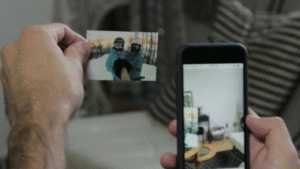A number of retailers are using augmented reality already. It looks as follows. The customer registers in the app, fills in his data, including preferences, and then visits the sales floor. There he finds an interesting product, launches the software and receives detailed information about the desired product. The system can also work with remote pointing at the rack. Then the assortment that is most relevant for a particular buyer will be highlighted on the screen.
AR for Ecommerce Benefits of augmented reality
AR not only makes the shopping process interesting, but also increases the number of products in the cart. This is due to the fact that the system can recommend products for specific requests. For example, a shopper can specify that they are looking for a frozen vegetable mix with low sodium content. The app analyzes a picture of the refrigerator and highlights products that match the conditions.
AR helps shoppers remember the brand and return to the store
For retailers, the introduction of augmented reality can be a strong boost in brand awareness. Research by marketers shows that the number of people using AR has almost doubled relative to the group of non-AR app users. For people, it’s a novelty that they want to tell others about.
For a retailer or manufacturer, it means they are gaining additional popularity through word of mouth.
AR helps sell less popular and more expensive products
Adding AR functionality to unpopular or expensive products helps promote them. Customers feel more comfortable when they can explore unfamiliar products without having to choose blindly.
AR helps attract new customers
Augmented reality can improve the shopping experience for people who are less mobile. They often order products from home. The technology allows them to get the full experience of actually coming into contact with the products without having to go outside.
AR applications – navigators
Software with AR technology can be used as a navigator on the sales floor. The customer enters a request and then receives instructions on how to get to the product location. This way, time can be saved and contact with point-of-sale staff can be reduced.
AR for finding grocery stock
Apps are used not only by customers but also by employees. A common case is when a customer comes in with a request for a product that is not on display. The employee in such a case enters the nomenclature and then checks the stock balances. AR also helps speed up the search process. Employees can point their phone at the stock rack and highlight the location of the desired product.
Augmented reality packaging
The most simple and applied functionality of augmented reality is the display of information. Manufacturers can put QR codes on the packaging themselves. A small price tag can fit only the name and price. A link through a QR code can output any amount of information: nutritional value, methods of application and cooking, serving options and brand history. The amount of data depends on the manufacturer’s imagination.
Meanwhile you can create your first Ar project on the Stories AR platform for free, this is how AR works for photos. Check the link below.



